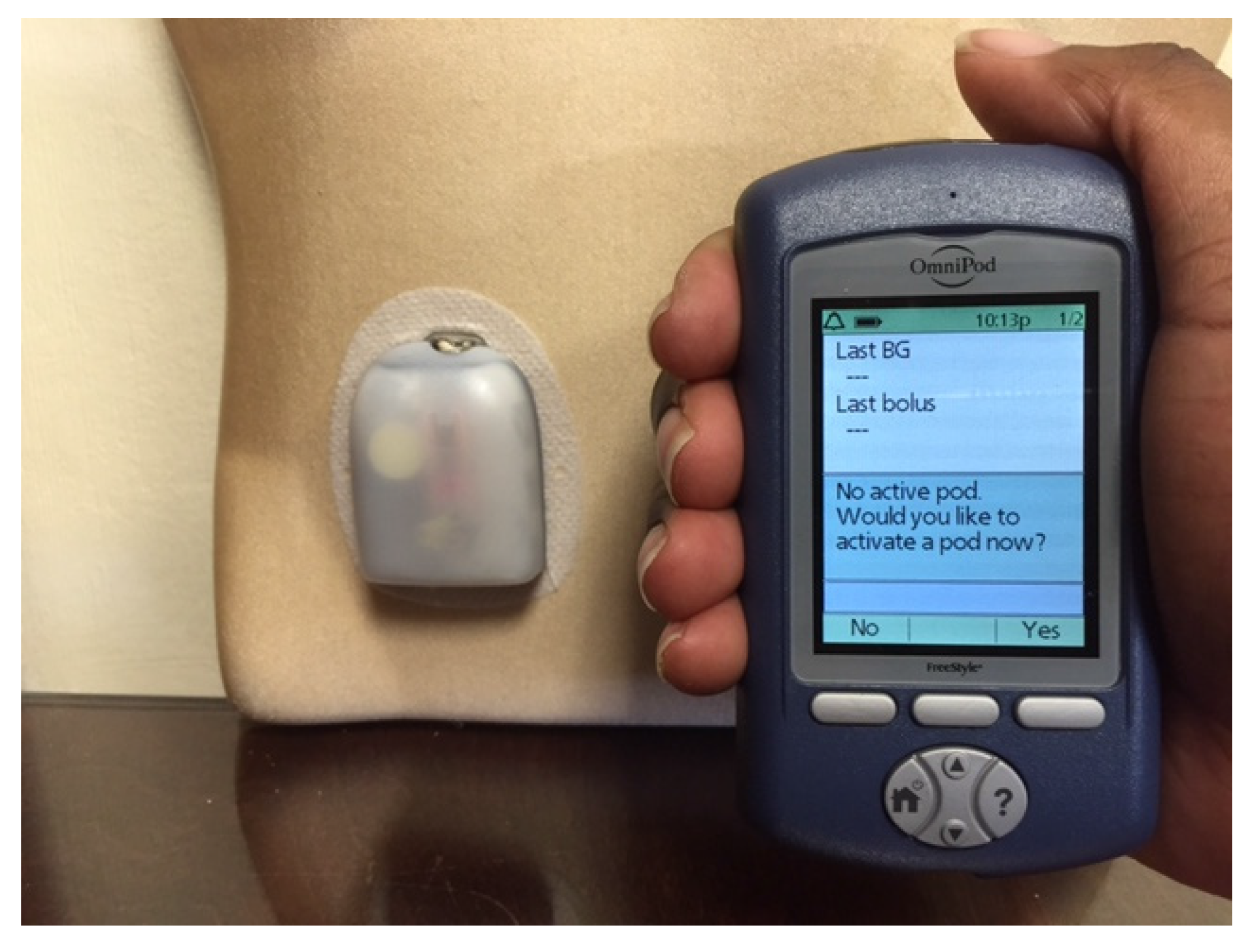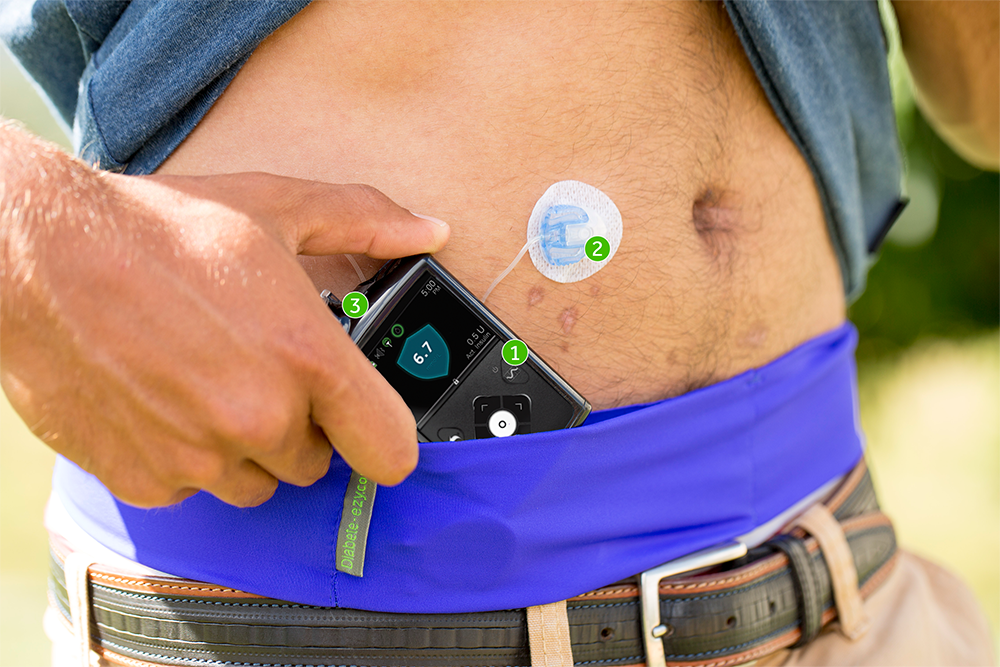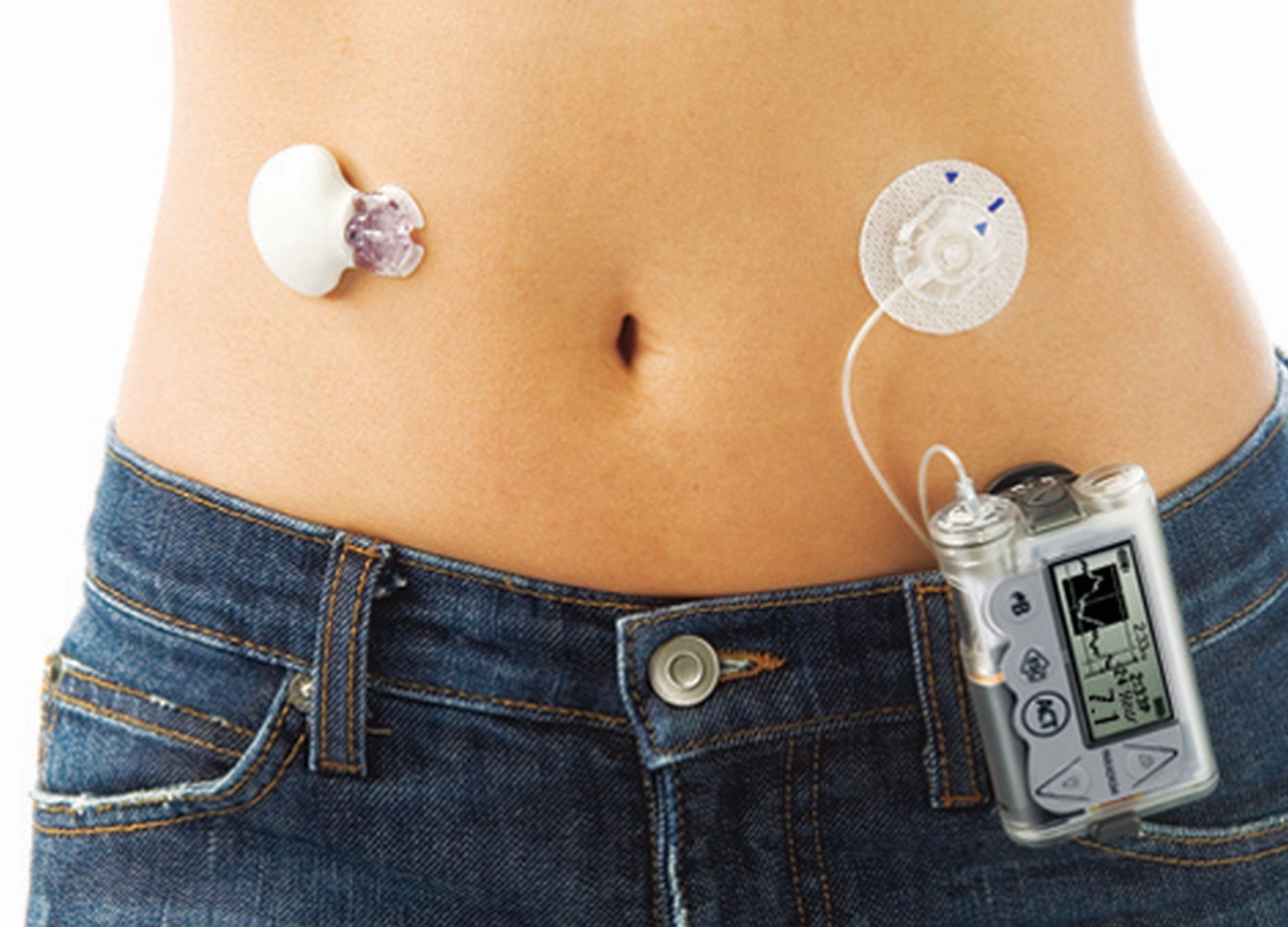How Much Does An Insulin Pump Cost
Cost of diabetes is skyrocketing, especially insulin prices. Make sure to inquire from your insurance and the pump company you choose about the upfront costs and ongoing monthly costs of a pump. You don’t want to start a pump and then find out you can’t afford to continue with it.
The Omnipod system can be a less expensive pump upfront, but the monthly pods can be more expensive depending on some insurances. Some insurances cover the Omnipod system well. Some even cover 100%.
The tubed pumps are expensive as an upfront cost, around $4000-8000, but the monthly costs can be less. Don’t get sticker shock! Insurance typically covers pump costs. The cost of a tubed pump will be generally the same between companies because your insurance will give a contracted set rate.
Talk with your insurance company about the costs including initial upfront costs to start and ongoing monthly costs for supplies. It greatly varies between insurance companies and even between plans for employers.
Medtronic Minimed 630g System
For an integrated CGM
This model from Medtronic comes with an optional CGM so a person can also monitor their blood sugar levels using the same device. It is also compatible with the Contour Next Link 2.4 blood glucose meter.
Medtronic claims that this system makes a person four times more likely to reach their target A1C level, which is their average blood glucose level over about 3 months.
Other stand out features include:
- alarms if a person goes below their preset glucose levels the device will stop issuing insulin if a person does not respond
- a bolus calculator, which automatically calculates doses and tells a person if they set them too close together
- predictive alerts
- compatible app for smartphones, which displays all readings and allows for notifications and alarms
- suitable for those with type 1 or type 2 diabetes
Many insurance companies cover the Omnipod Dash. It is also available through pharmacies with a prescription.
Who Uses An Insulin Pump
Insulin pumps are needed for individuals with diabetes who have low levels of insulin in the body or do not respond to insulin properly. Type one diabetes is a condition in which the pancreas does not make enough insulin. People with type two diabetes produce insulin but their bodies do not utilize it properly, or they do not make enough. An insulin pump is a good alternative for those who need constant insulin injections as pumps are designed to monitor blood sugar levels on their own.
Discover how an insulin pump works and how it benefits those with diabetes.
Recommended Reading: Financial Help With Diabetic Supplies
What Can You Customize With A Diy System
People often choose to DIY loop because settings are more adjustable than FDA-approved systems. Both OpenAPS and Loop have adjustable setup options to choose from. You can find instructions for each system in the links above.
Why are options important? Because they can help you to get the best glucose results possible.
DIY customizations include:
What Is Diy Looping

Simply put, AID systems are trying to do the job of a pancreas. They accomplish this by:
-
Sensing blood sugar changes with a continuous glucose monitor
-
Sharing real-time CGM data with an algorithm
-
Making automatic adjustments to the amount of insulin thats delivered
While a CGM and an insulin pump can be used independently, theyre even more helpful when they communicate. There are two DIY looping options to make this happen: OpenAPS and Loop. Both are open-source instructions. This means that theyre available to the general public to build but not to purchase. Its important to learn about both systems before choosing one over the other.
DIY systems are also known as hybrid closed-loop systems. This is because they arent fully hands-off systems. They still require actions for meals and adjustments for exercise. Closed-loop, or hands-off systems, are still under development.
Multiple studies show the possible benefits of using an AID system.
Recommended Reading: How Do Diabetics Check Their Blood Sugar
Can Diy Looping Help Lower Your Healthcare Costs
Not necessarily. All of the supplies needed to support a DIY system can stack up in terms of cost. But not having to purchase a new insulin pump can help. Total costs will depend on what path you take with your hardware choices.
Regardless of the AID system you choose to build or buy research highlights their potential for positive physical and emotional benefits.
What Is Insulin Pump Therapy
An insulin pump is a small device that mimics some of the ways a healthy pancreas works. It is safe, discreet and reliable. It can be attached to the same sites you currently inject in and insulin is simply delivered to your body through a thin tube. An insulin pump replaces the need for frequent injections by delivering rapid acting insulin continuously 24 hours a day. See below its components:
You May Like: How Does Diabetes Cause Kidney Failure
Pump Safety Is A Commitment
The one requirement for using a pump is that you and/or your caregivers are ready and willing to do what it takes to use the pump safely. Checking blood sugar is important because it will warn you if your pump stops working right or your infusion set stops working. This can cause high blood sugar levels and cause diabetes ketoacidosis , which is very serious and dangerous. Checking blood sugar levels frequently will alert you to this possibility and will prevent the development of ketones.
Who Should Use An Insulin Pump
Using an insulin pump is a personal preference. You may want to use an insulin pump if you:
- Experience delays in food absorption.
- Are active and may want to pause insulin doses when exercising.
- Have severe reactions to low blood sugar.
- Have diabetes and are planning a pregnancy.
Insulin pumps can also be a good option for young people with Type 1 diabetes. A pump can deliver a steady supply of insulin, even for children and others who might have trouble sticking to a schedule for insulin injections.
Don’t Miss: What’s The Treatment For Type 2 Diabetes
Which Pump Is Best
All insulin pumps have benefits and drawbacks. Your choice will depend on whatâs most important to you. Do you want easy setup? Low up-front cost? Ease of use? Since most insurance companies will replace your pump only after several years of use, itâs important to find one that works for you.
Some things to think about:
- Which is best for your lifestyle: a traditional pump, tubeless pump, or pump with handheld remote?
- Pump reservoirs hold between 176 and 315 units of insulin. Kids may be fine with smaller reservoirs adults may want larger.
- Can the pump deliver insulin in small amounts? Kids and people who are very sensitive to insulin may want one that does.
- Does the pump come with carb counts of common foods to help you decide how much insulin you need?
- Can the pump interact with a blood glucose meter or continuous glucose meter ?
- Does the pump software work with your phone or laptop?
Travelling With An Insulin Pump
While travelling, an accompanying letter on practice letterhead should be provided stating the medical history of the patient, including the diagnosis of type 1 diabetes, and that management is via an insulin pump. A list of current drugs, with generic names and doses, should be included. The letter should stress that it is important that the patients drugs accompany them, and that the insulin pump should not be disconnected. In particular, the pump should not be put through airport X-ray machines.
Prescriptions should be obtained for insulin and other drugs before travel. In case of pump failure both rapid-acting and long-acting insulin should be obtained along with injecting devices and needles. Sufficient equipment for glucose testing should be packed in the hand luggage. In addition to drugs and glucose-testing equipment adequate quantities of consumables should be packed. As a rule, pack twice as many sets as potentially required for the planned period away from home. An adequate supply of consumables should be included in the hand luggage while flying.
Don’t Miss: How Can Diabetes Be Managed
Are Insulin Pumps Better For People With Diabetes
Supporters of insulin pumps believe that they allow diabetics to be more flexible, and eliminate the need for a wearing, daily routine.
A diabetic with an insulin pump does not necessarily have to rise at a certain time to take insulin. When it comes to diet, insulin pumps allows you to be more flexible with that they eat, if they are used in the correct way.
Interoperability And Homemade Diabetes Tech

The future of insulin pumping definitely appears to be connecting these devices to CGMs for improved blood glucose control. This of course has pushed to the forefront the issue of device interoperability and do-it-yourself technology.
Behind this evolution has been pressure from the patient community rallying behind a #WeAreNotWaiting mantra pushing to get innovative technology out more quickly and allow data and device integration.
Many of the folks creating DIY connected systems are using older, discontinued insulin pumps such as the Minimed Revel and Paradigm models. Despite an FDA warning and mainstream media concern that surfaced in 2019, thousands of people are now safely and successfully using these homemade systems.
Meanwhile, FDA has published new interoperability protocols to help the established medtech industry create products that are more modular and can work together safely and seamlessly. For insulin pumps like the Tandem t:slim X2, that means gaining a marking that new pump as interoperable technology.
This is important to keep in mind when shopping for new insulin pump technology.
You May Like: How Many People In The Us Have Type 1 Diabetes
How Does The Insulin Pump Work
The insulin pump is a small device that is programmed to deliver insulin into fatty tissue under the skin.
In many diabetics, mainly type 1, treatment is based on the administration of insulin through subcutaneous injections. The problem is, patients have to follow strict control to avoid uncontrolled glucose levels.
As explained in an article from the University Clinic of Navarre, the insulin pump automatically administers basal insulin and before meals. It saves the patient from having to perform the injections.
This device is programmed according to the specific needs of the sick person. In other words, the doses and the frequency of administration are established according to a preliminary study of each case of diabetes.
New Insulin Pumps 2019
Heading towards the closed loop system. Some people try and create their own DIY closed loop systems, but that will be a thing of the past with the advancement of technologies.
For example, Insulin pump makers Tandem Diabetes Care and digital health company TypeZero Technologies have just finished a pilot study of their hybrid closed-loop system It uses the Dexom G6, T: a slim X2 insulin pump, and TypeZero algorithms to automatically adjust basal insulin throughout the day.
This a cool article discussing some of the exciting things heading to the insulin pump market in 2019 and beyond!
Recommended Reading: Type 2 Diabetes Dry Mouth
Is An Insulin Pump Right For Me How Do I Know It Is Right For Me
If you or a person that has diabetes and uses insulin, an insulin pump might be the right choice. Ask your diabetes educator to tell you about what features might be best for your needs. Insulin pumps are a long term decision, and its normal to rely on a pump for 4 to 5 years, so its important to discuss different options with your health care provider so that you can assess the features and choose a pump that is right for you.
Insulin pumps are not for everybody. Not all patients with Type 2 diabetes are recommended to use an insulin pump, especially if the diabetes is already under control using oral medications. They are also not recommended for patients with pre-diabetes. Its best to speak to your physician about whether you should use an insulin pump or not.
Getting An Insulin Pump From Ehcs
Edwards Health Care Services offers a range of insulin pumps and is committed to helping improve your quality of life living with diabetes. We strive to deliver timely, courteous, ethical and personal serviceevery time!
One-on-one support and guidance from your very own Diabetes Care Advisor
Easy supply reorders via phone, email or web
Autoship program so you can stay Ontrack
Autoship not available for all insurance plans
Free shipping on insurance products delivered to your home
Recommended Reading: What Can People With Type 2 Diabetes Eat
Insulin Pumps: Relief And Choice
For people living with diabetes who are tired of injections, an insulin pump can bring welcomed relief. Insulin pumps are small, computerized devices that deliver insulin in two ways:
- In a steady measured and continuous dose , or
- As a surge dose, at your direction, around mealtime.
Doses are delivered through a flexible plastic tube called a catheter. With the aid of a small needle, the catheter is inserted through the skin into the fatty tissue and is taped in place. The tube/needle combination is called an infusion set.
The pumps can release small doses of insulin continuously , or a bolus dose close to mealtime to control the rise in blood sugar after a meal. This delivery mimics the body’s normal release of insulin.
The insulin pump may integrate with your continuous glucose monitor to help understand how your blood glucose is being affected and change the amount of insulin in some cases. Pumps can help some people reach their blood sugar targets and many people prefer this continuous system of insulin delivery over injections.
Whats The Difference Between A Traditional Insulin Pump And A Patch Pump
Traditional insulin pumps push insulin from a chamber within the pump through tubing to a site on the skin that is connected to a smaller flexible plastic tube . The cannula is a few millimeters long and delivers the insulin underneath your skin.
Insulin patch pumps also use a flexible plastic tube under the skin, but the insulin delivery chamber and the cannula are part of one pod that sits in the skin with an adhesive patch. You can place the patch directly on your belly or arm. There is no external tubing with a patch pump, and its controlled wirelessly with a handheld controller.
The tubing and cannula are removed and replaced every two to three days. A healthcare provider called a Diabetes Care and Education Specialist will show you how to do this.
Common insulin pump brands include:
- Medtronic .
Don’t Miss: Does Being Diabetic Make You Gain Weight
Benefits Of Using An Insulin Pump
Studies have shown that an insulin pump can improve diabetes control and lessen the risk of hypoglycemia. Many people find increased flexibility in the timing of meals and exercise when wearing an insulin pump.
Sharing insulin pump datawith your care team between office visits helps to make the most of the time you spend with them during your appointments. Uploading your pump reports allows the care team to track patterns and make adjustments to your care plan if needed.
What Is An Insulin Pump And How Does It Work

Insulin is a glucose-regulating hormone produced by the pancreas. It allows the body to utilize dietary carbohydrates for energy. Insulin is needed to transport glucose, the body’s preferred source of fuel, to cells throughout the body where it can be immediately utilized for energy or stored for later use. It is also needed to prevent blood sugar highs and lows. Some patients with diabetes need to use an insulin pump to stabilize their blood sugar levels. Learn how it works now.
You May Like: Number Of Grams Of Sugar Per Day For Diabetic
What Is The Market Size Of United States Insulin Pump
USA insulin pump market is expected to grow more than US$ 5 Billion by the end of year 2022. The convenience of using insulin pump are gaining inclusive acceptance in the market as insulin delivery systems. Now insulin Pump has become famous and a preferred device for Type1 diabetes patients in the United States. Insulin Pump market in US constitutes comparatively small portion of total Insulin Delivery Systems market. United States CGM Market to be more than US$ 2 Billion in Future USA CGM market has a huge potential in future. Continuous Glucose Monitoring users have grown with 35 percent in 2016 from its users in 2009. United States CGM market hold immense potential in future as many private insurer starts reimbursing CGM in United States based on certain criteria. Many experts in United States believe that CGM is best tool for diabetes management. CGM is compatible for those having several diabetes complications occurring frequently.Continue reading > >
The Cost Of Insulin Pump Therapy
With eligible hospital insurance you could get coverage for an insulin pump.
References
Read Also: Healthy Diet For Diabetes And High Cholesterol